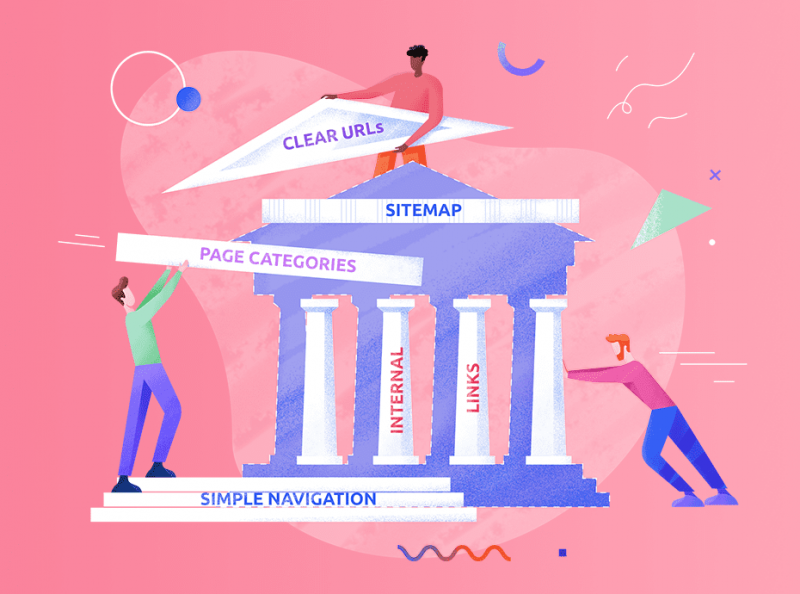
As technology continues to evolve, the importance of having an online presence has become more evident than ever before. Whether you are a business owner, blogger, or an individual showcasing your portfolio, a well-optimized website structure and navigation are crucial for attracting and retaining visitors. In this article, we will delve into the essential aspects of website structure and navigation and explore how they contribute to a successful online presence. In this digital age, websites have become the primary medium through which individuals and businesses interact with their audience. A well-designed website not only reflects your brand identity but also ensures a seamless user experience. One of the fundamental elements of a successful website is its structure and navigation, which lay the foundation for user engagement and conversions.
2. Importance of Website Structure and Navigation
Imagine visiting a physical store where the products are disorganized, and you have to wander aimlessly to find what you need. The frustration you feel in such a scenario mirrors what a visitor experiences on a poorly structured website. A logical and intuitive website structure is like a roadmap that guides users to their desired destination, be it information, products, or services.
3. Understanding Website Structure
Hierarchy of Information
A well-organized website follows a clear hierarchy of information. The most critical content should be easily accessible from the homepage, with subsequent pages providing more specific details. This hierarchical arrangement helps users grasp the overall concept of your website and find what they need quickly.
URL Structure
Another aspect of website optimization is the URL structure. Using descriptive and keyword-rich URLs not only helps with SEO but also gives visitors an idea of the page's content even before clicking on it.
Internal Linking
Internal linking is the practice of connecting related pages within your website through hyperlinks. This not only aids in navigation but also distributes authority and improves SEO rankings.
4. Improving Website Navigation
Intuitive Menu Design
A well-structured menu is the backbone of your website's navigation. It should be easy to find and simple to understand. Avoid overwhelming users with too many options and use clear and concise labels for each menu item.
Breadcrumbs
Breadcrumbs provide users with a trail of the pages they have visited, making it easy for them to backtrack or explore related content.
Search Functionality
Implementing a robust search functionality enables users to find specific information without going through layers of navigation.
Call-to-Action Buttons
Strategically placed call-to-action buttons prompt users to take specific actions, such as signing up for a newsletter or making a purchase.
5. Mobile Responsiveness
With an increasing number of users accessing websites through mobile devices, having a mobile-responsive design is paramount. A responsive website automatically adapts its layout to fit various screen sizes, ensuring a seamless user experience across devices.
6. Reducing Page Load Time
A slow-loading website can lead to high bounce rates and frustrated visitors. Optimizing images, leveraging browser caching, and using content delivery networks (CDNs) are some ways to enhance page load speed.
7. Sitemaps and XML Files
Sitemaps provide search engines with a blueprint of your website's structure, making it easier for them to crawl and index your pages. XML sitemaps, in particular, assist in notifying search engines about updates and changes to your site.
8. Schema Markup for Enhanced Navigation
Schema markup enhances search engine visibility by providing more context to your content. Rich snippets displayed in search results can attract users to click on your website.
9. Monitoring and Analyzing Navigation Metrics
Regularly monitoring website analytics can provide insights into user behavior, popular pages, and potential navigation bottlenecks. Use this data to make informed decisions on improving your site's structure.
10. The Role of User Experience (UX)
An optimized website structure goes hand-in-hand with a positive user experience. Consider user feedback and continually iterate on your design to enhance user satisfaction.
11. Accessibility Considerations
Ensure your website is accessible to all users, including those with disabilities. Providing alternative text for images and captions for videos can make a significant difference.
12. Leveraging SEO through Optimized Structure
An organized website structure contributes to better search engine rankings. By aligning your website's structure with your SEO strategy, you can improve organic traffic and visibility.
13. Avoiding Common Navigation Mistakes
Some common navigation mistakes, like broken links, dead-end pages, or unclear labels, can frustrate users and deter them from exploring further.
14. Future-Proofing Your Website Structure
Technology is ever-changing, and so are user expectations. Future-proof your website by staying updated with the latest trends and incorporating new technologies when necessary. optimizing website structure and navigation is not just about SEO but also about providing an enjoyable and seamless experience for your visitors. A well-structured website with intuitive navigation can significantly impact user engagement, conversion rates, and ultimately, the success of your online presence.
Pamper Your Hair with a DIY Hair Spa Treatment: Step-by-Step Instructions